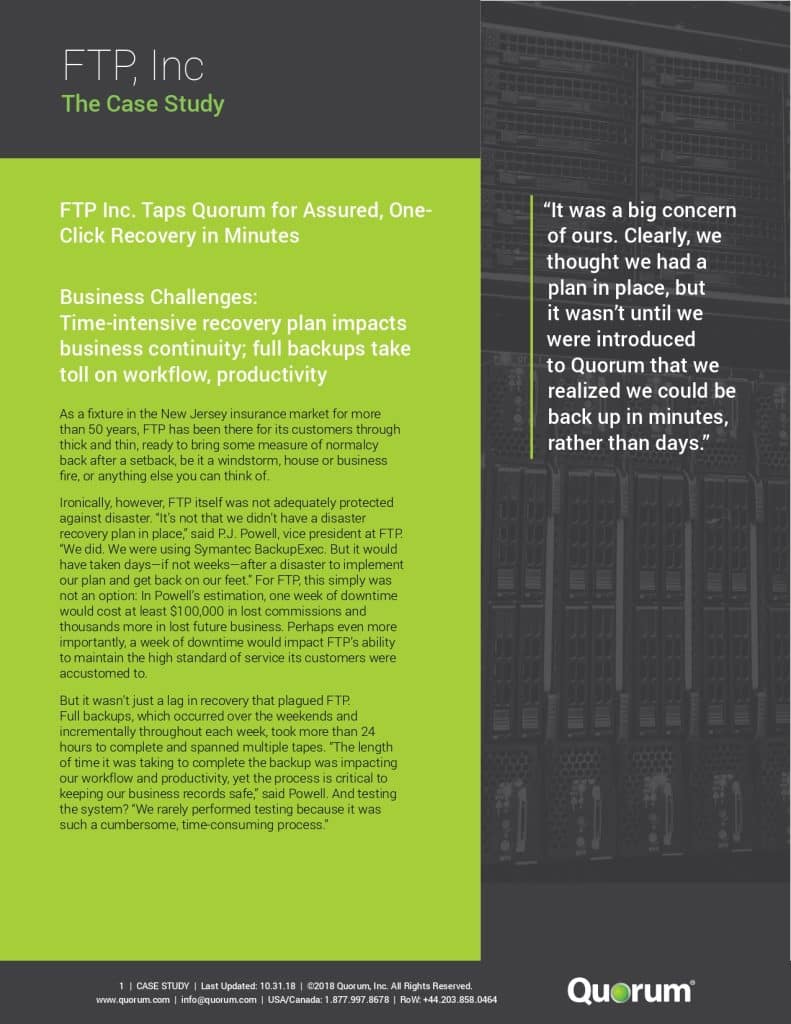
Business Challenges: Time-intensive recovery plan impacts business continuity; full backups take toll on workflow, productivity
As a fixture in the New Jersey insurance market for more than 50 years, FTP has been there for its customers through thick and thin, ready to bring some measure of normalcy back after a setback, be it a windstorm, house or business fire, or anything else you can think of.
Ironically, however, FTP itself was not adequately protected against disaster. “It’s not that we didn’t have a disaster recovery plan in place,” said P.J. Powell, vice president at FTP. “We did. We were using Symantec BackupExec. But it would have taken days—if not weeks—after a disaster to implement our plan and get back on our feet.” For FTP, this simply was not an option: In Powell’s estimation, one week of downtime would cost at least $100,000 in lost commissions and thousands more in lost future business. Perhaps even more importantly, a week of downtime would impact FTP’s ability to maintain the high standard of service its customers were accustomed to.
But it wasn’t just a lag in recovery that plagued FTP. Full backups, which occurred over the weekends and incrementally throughout each week, took more than 24 hours to complete and spanned multiple tapes. “The length of time it was taking to complete the backup was impacting our workflow and productivity, yet the process is critical to keeping our business records safe,” said Powell. And testing
the system? “We rarely performed testing because it was such a cumbersome, time-consuming process.”

